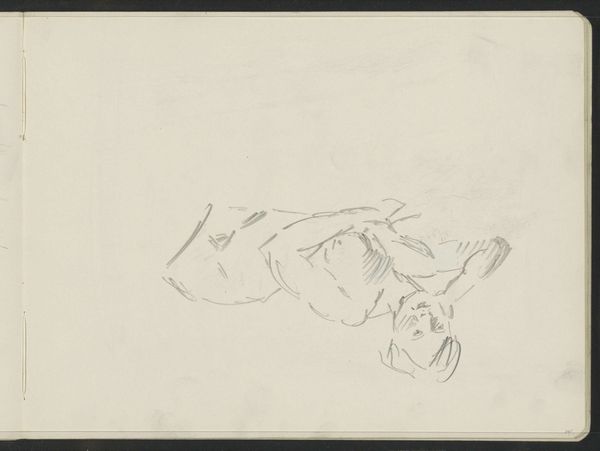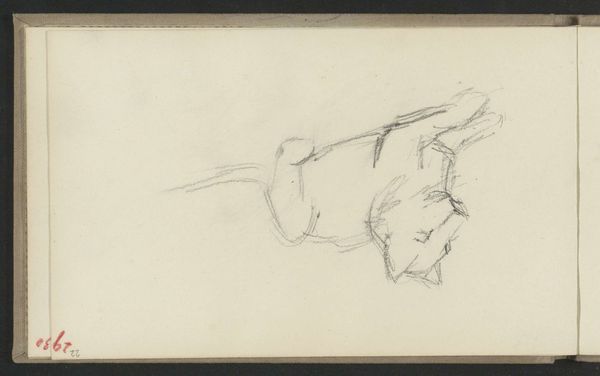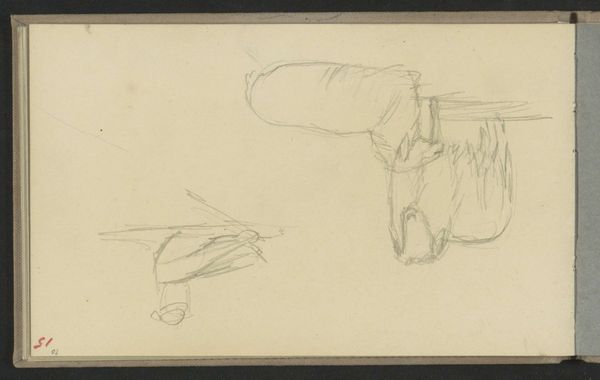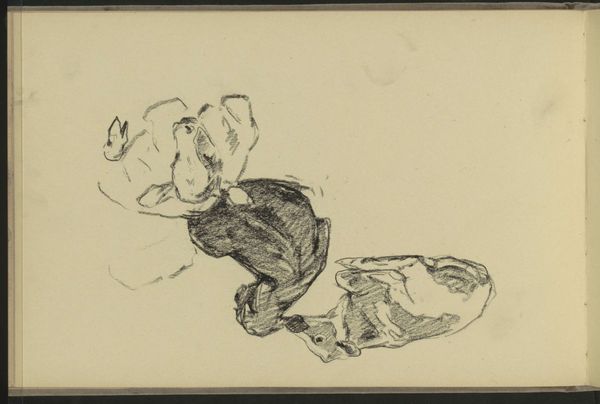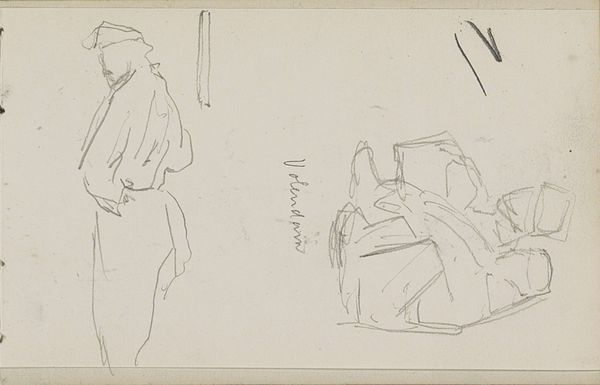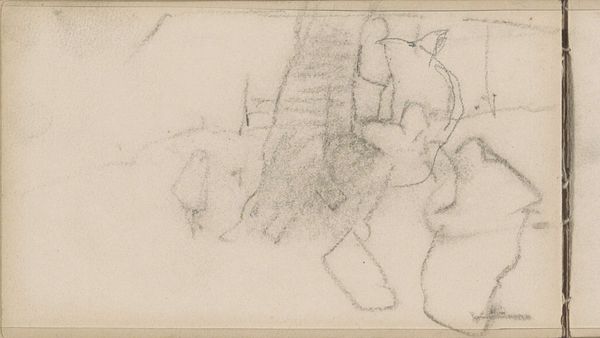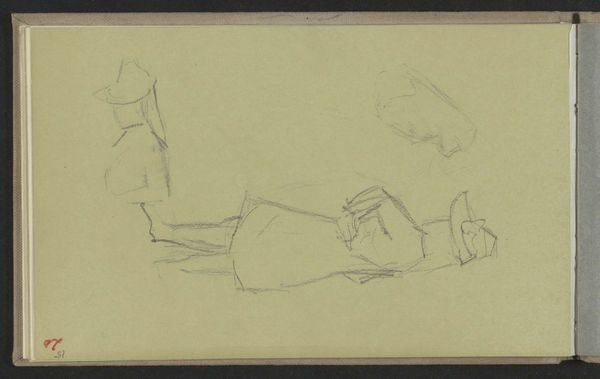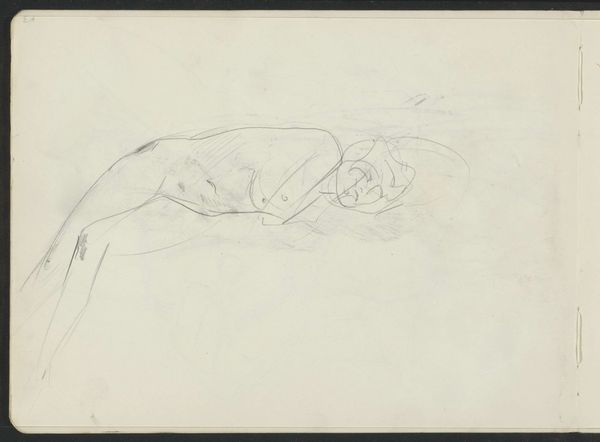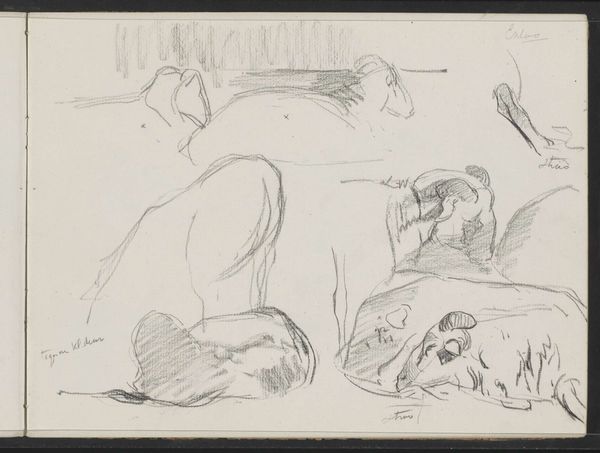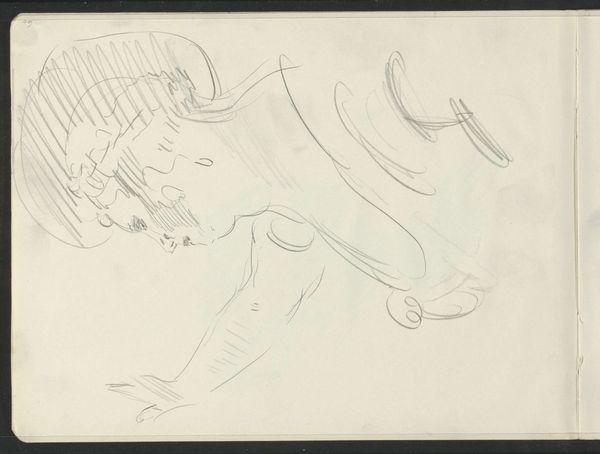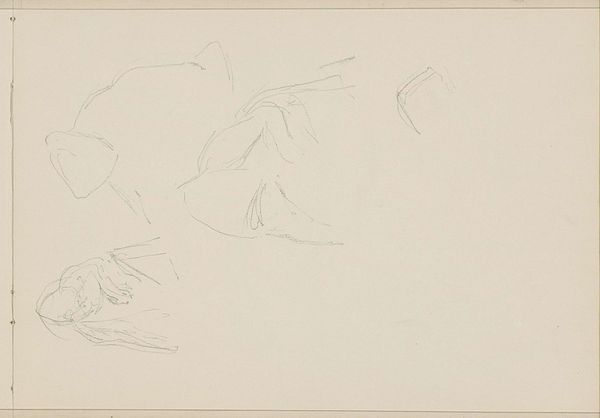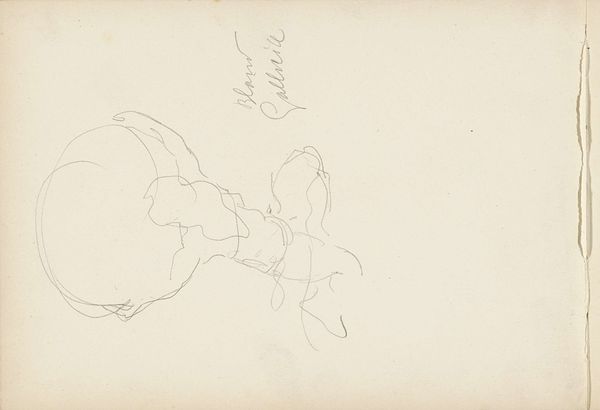
drawing, pencil
#
portrait
#
drawing
#
light pencil work
#
quirky sketch
#
dutch-golden-age
#
impressionism
#
sketch book
#
hand drawn type
#
figuration
#
personal sketchbook
#
idea generation sketch
#
sketchwork
#
pen-ink sketch
#
pencil
#
sketchbook drawing
#
sketchbook art
#
realism
Copyright: Rijks Museum: Open Domain
Curator: Jozef Israëls' pencil drawing, "Twee vrouwenkoppen," or "Two Women's Heads," dating from between 1834 and 1911, offers us an intimate glimpse into the artist's process. It's currently housed here at the Rijksmuseum. Editor: The first thing that strikes me is its tentative quality. The sketchiness gives the piece a raw and almost vulnerable feel. Curator: Absolutely. Israëls came of age during a time when Dutch art was deeply concerned with representing the lives of ordinary people, especially those on the margins. Consider, perhaps, these are studies of working-class women, quickly sketched in order to capture not just physical likeness but social condition. Editor: That makes me think about the material constraints. He is using pencil here. It is cheap, easy to obtain. Was that choice directly informed by who these figures were in society? Is it about the kind of labor that created the drawing and who would consume this kind of image? Curator: It is highly possible. As an artist deeply concerned with social realism, Israëls was part of a generation pushing back against the elitism that had dominated earlier artistic circles. I believe the impressionistic style amplifies a concern for accessibility—art shouldn't just reflect reality for a few, it should be visible and understandable to many. And so you see many similar approaches cropping up around this time across Europe as social conditions deteriorated. Editor: Interesting. This almost performative modesty, choosing readily available material like pencil...it makes a statement itself about accessibility. However, it raises interesting questions. Was this approach intended for social justice or more about artistic strategy and a novel way of depicting modern themes using traditional means? What kind of new relationship did this foster with potential buyers who perhaps would buy painting, rather than a mere pencil sketch? Curator: Precisely, I see your point. To position this as merely artistic strategy, however, ignores Israëls engagement with themes of empathy and the harsh realities of life. This work and others really helped open art historical practice to consider gender and social standing. Editor: Well, whether it's a pure artistic vision or social commentary—it provides plenty of food for thought regarding the conditions of making and materials and reception. Curator: Agreed. And hopefully will resonate with us today in similar ways.
Comments
No comments
Be the first to comment and join the conversation on the ultimate creative platform.
